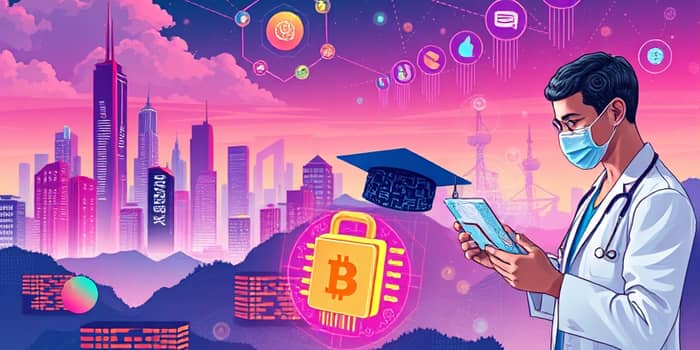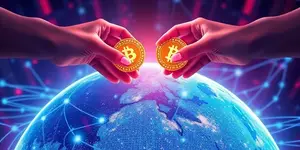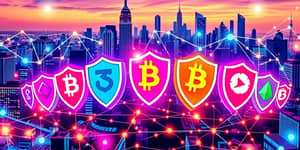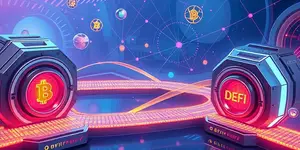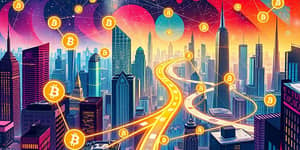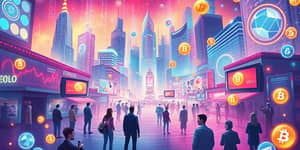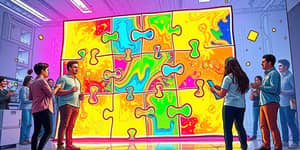The explosion of non-fungible tokens (NFTs) since their rise in digital art has evolved into something far more transformative. By 2025, the global NFT market is on track to generate $608.6 million in revenue, powered by 11.64 million users worldwide. While art remains an important use case, NFTs are reshaping industries from gaming to real estate and healthcare.
In this article, we explore how NFTs deliver verifiable proof of ownership, programmable access and benefits, and new revenue streams. We delve into key applications, emerging trends, and the challenges ahead for mainstream adoption.
Gaming and the Metaverse: Building Digital Economies
One of the most impactful NFT use cases lies in the gaming sector. NFT-powered assets—skins, weapons, characters, and virtual land—give players true digital ownership. These assets can be traded, sold, or transferred across platforms, creating open economies where skills translate into real value.
Play-to-earn models reward gamers with tokenized items or cryptocurrency for achievements, fostering communities that earn a living through gameplay. Platforms like Immutable, Ronin, and Base are at the forefront, integrating interoperable, cross-game item transfer and resale rights natively.
By 2025, NFT gaming is forecast to reach $0.54 trillion, with a compound annual growth rate of 14.84% through 2030. As virtual worlds merge and players demand asset portability, NFTs will serve as the backbone of the metaverse economy.
Tokenizing Tangible Assets: Real Estate and Beyond
Beyond pixels, NFTs are revolutionizing property markets. Tokenized real estate deeds encode ownership records on the blockchain, enabling faster transactions and reduced paperwork. Buyers and sellers benefit from tamper-resistant, verifiable records that build trust and transparency.
Virtual land in metaverse projects is also booming: plots in digital worlds can appreciate and be developed, much like physical real estate. Companies such as Propy offer solutions for seamless property tokenization in both virtual and real-world contexts.
By embedding ownership into digital tokens, real estate markets can achieve liquidity and global access, unlocking new investment opportunities for a wider audience.
Membership, Music, and Cultural Access
NFTs are redefining membership programs and fan experiences. Instead of plastic cards or standard subscriptions, communities use token-gated access to grant perks and VIP treatment. Projects like LinksDAO and PROOF Collective issue NFTs that unlock exclusive events, Discord channels, and real-life gatherings.
In music and entertainment, artists issue NFT tickets and VIP passes that eliminate fraud and allow programmable benefits. Holders can receive dynamic rewards—such as backstage meet-and-greets or royalty shares—based on real-time engagement. This model strengthens the bond between creators and fans, while providing new monetization streams.
Credentials, Healthcare, and Identity
Academic institutions and professional bodies are turning to NFTs for certificate issuance. Diplomas and transcripts become tamper-proof academic credentials on the blockchain, simplifying cross-border recognition and combating fraud. Graduates carry permanent, verifiable proof of their achievements.
In healthcare, NFTs facilitate secure storage and sharing of medical records. Patients gain granular control over their data, granting access only to authorized providers. This approach accelerates treatment and ensures privacy.
Digital identity solutions use NFTs as immutable identity tokens that streamline KYC and voting processes. Users own a single credential, reducing redundant verifications and enhancing security.
Additional Use Cases and Trends
- Supply Chain Tracking: NFTs verify product provenance in fashion and luxury goods.
- Intellectual Property: Brands register patents and trademarks on-chain for unforgeable IP claims.
- Redeemables: vIRL NFTs connect virtual tokens to real-world items, blending digital and physical ownership.
As businesses explore NFTs for loyalty programs and ticketing, communities become stakeholders rather than mere customers. Programmable perks, such as discounts or exclusive drops, create ongoing engagement and brand advocacy.
The Road Ahead: Challenges and Opportunities
Despite explosive growth, obstacles remain. Scalability and high transaction fees on popular blockchains can hinder user adoption. Interoperability standards between platforms are still evolving, requiring collaboration across ecosystems.
Regulatory uncertainty poses another hurdle; clear guidelines on digital assets are essential to foster trust among traditional industries. Privacy concerns and environmental impacts of blockchain networks also demand innovative solutions, such as layer-2 scaling and green consensus mechanisms.
Yet the potential is immense. NFTs offer new revenue streams for creators, democratize investment in real estate and art, and establish trustless digital identities. As infrastructure matures, mainstream sectors—from education to supply chain—stand to benefit.
Conclusion
From vibrant virtual worlds to tangible assets, NFTs are transcending their origins in digital art. The unique features of blockchain-based tokens—verifiability, programmability, and transferability—are unlocking possibilities across industries.
As more enterprises and regulators embrace NFTs, we will witness a transformation in how we own, share, and interact with digital and physical assets. The journey from speculation to practical solutions has begun, and the next wave of innovation is poised to reshape our global economy.
References
- https://osl.com/academy/article/what-is-the-future-of-nfts-exploring-the-next-big-use-cases-beyond-art
- https://onemint.io/blog/nft-use-cases-in-2025
- https://www.ortmoragency.com/blog/nft-beyond-art-14-practical-use-cases-of-nft
- https://zenledger.io/blog/5-nft-use-cases-beyond-art-games/
- https://www.coinbackyard.com/nft/nfts-beyond-art-utility-and-innovation-in-2025/
- https://www.coolest-gadgets.com/nft-statistics/
- https://www.morpher.com/blog/nft-use-cases
- https://nftinsider.io/nfts-for-beginners/use-of-nfts-beyond-art-and-collectibles/

